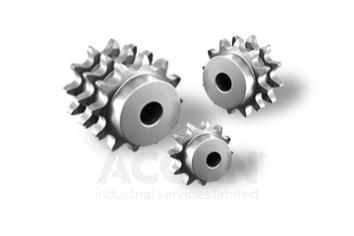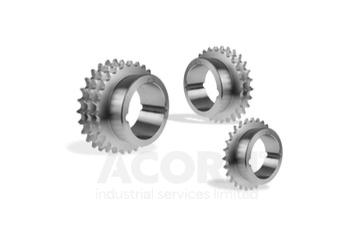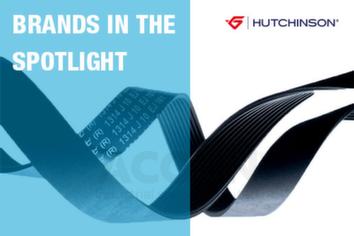- $USD
- SALES TEL: +44 (0)1709 789 933
- Contact us
- Services
- Log in
Chain sprockets hold significant importance in mechanical systems that rely on chain or belt drives to transmit power. These gear-like wheels with teeth are crucial in engaging with the chain or belt, enabling the efficient transfer of motion and power between rotating shafts.
At ACORN, we have variations of chain sprockets available, such as pilot bore, tapered bush, bored and keyed sprockets.


Our sprockets are available in a number of different designs:
The Pilot Bore Sprocket, also called a Rough Stock Bore Sprocket, is secured onto the shaft using a bushing or a hub. The Sprocket is supplied with a bore that must be re-bored to fit the customer’s shaft size.
The Tapered Bush Sprocket is mounted onto the shaft using a tapered bushing also available from Acorn.
The Bored and Keyed Sprocket, also referred to as Bored to Size, needs to be mounted onto a shaft with a similar keyway to fit the sprocket.
Acorn also supplies double row, also known as double simplex or duplex and triple row or triplex sprockets.
The double simplex sprocket is a sprocket with double rows of cogs. The double simplex sprocket is used when two different drives are driven by the same shaft or when one sprocket is driven and also drives another sprocket drive. This type of sprocket is commonly used with simplex chains.
For sprockets made from a particular material, such as stainless steel, please contact your nearest Acorn Branch for further details.
Chain drives, which incorporate both chains and sprockets, are suitable for applications with lower speeds and higher torques compared to belt drives.
At ACORN industrial services, our offerings extending beyond just pulleys. We are committed to providing other power transmission products to meet your industrial needs:



A chain sprocket is a mechanical component with teeth that mesh with a chain, bar, or other grooved material. As the sprocket rotates, the teeth grip the chain and move the connected parts, allowing for controlled rotation of large equipment and machinery.
The speed and acceleration of a machine with a sprocket system depend on the size of the sprocket. A bigger rear sprocket or smaller front sprocket will increase acceleration but decrease top speed. Conversely, a smaller rear sprocket or bigger front sprocket will reduce acceleration but increase top speed
The frequency of sprocket replacement depends on several factors, including the condition of the chain and the level of wear on the sprocket. A common rule is to replace both front and rear sprockets every time you replace your chain, especially if your chain has lasted for its full life of, say, 15,000 miles. However, sometimes a sprocket replacement can wait in cases where you’re replacing a prematurely worn chain.
Matching a sprocket to a chain involves ensuring that the pitch and width of both the sprocket and chain are compatible. The pitch of the chain must match the pitch of the drive sprocket or drive rim, and this must match the end sprocket of the bar. If these elements don’t match, then damage will occur.